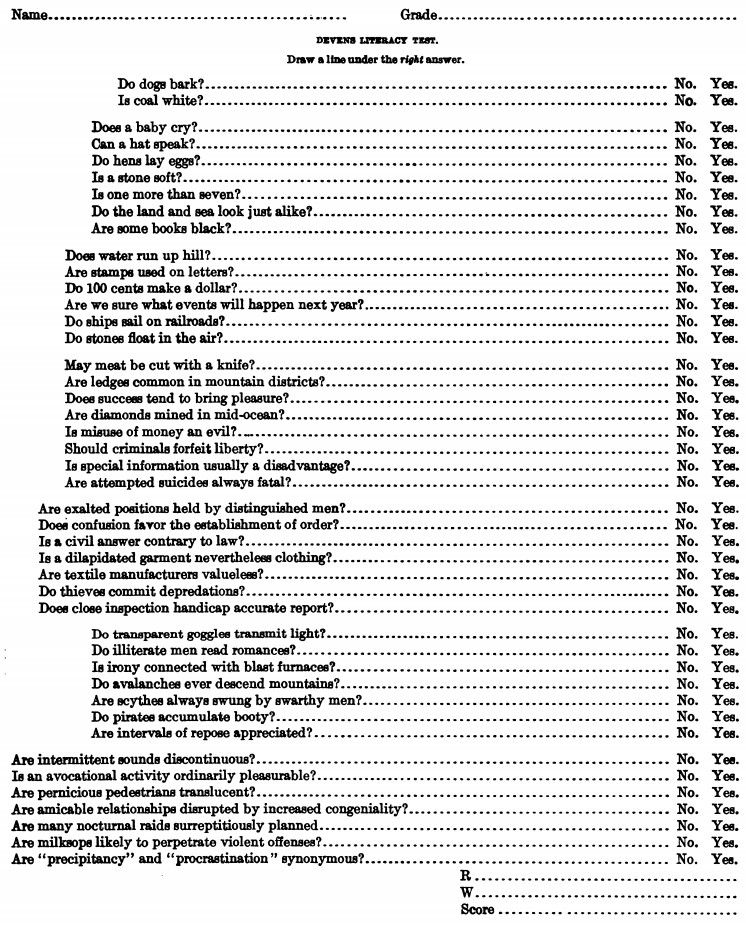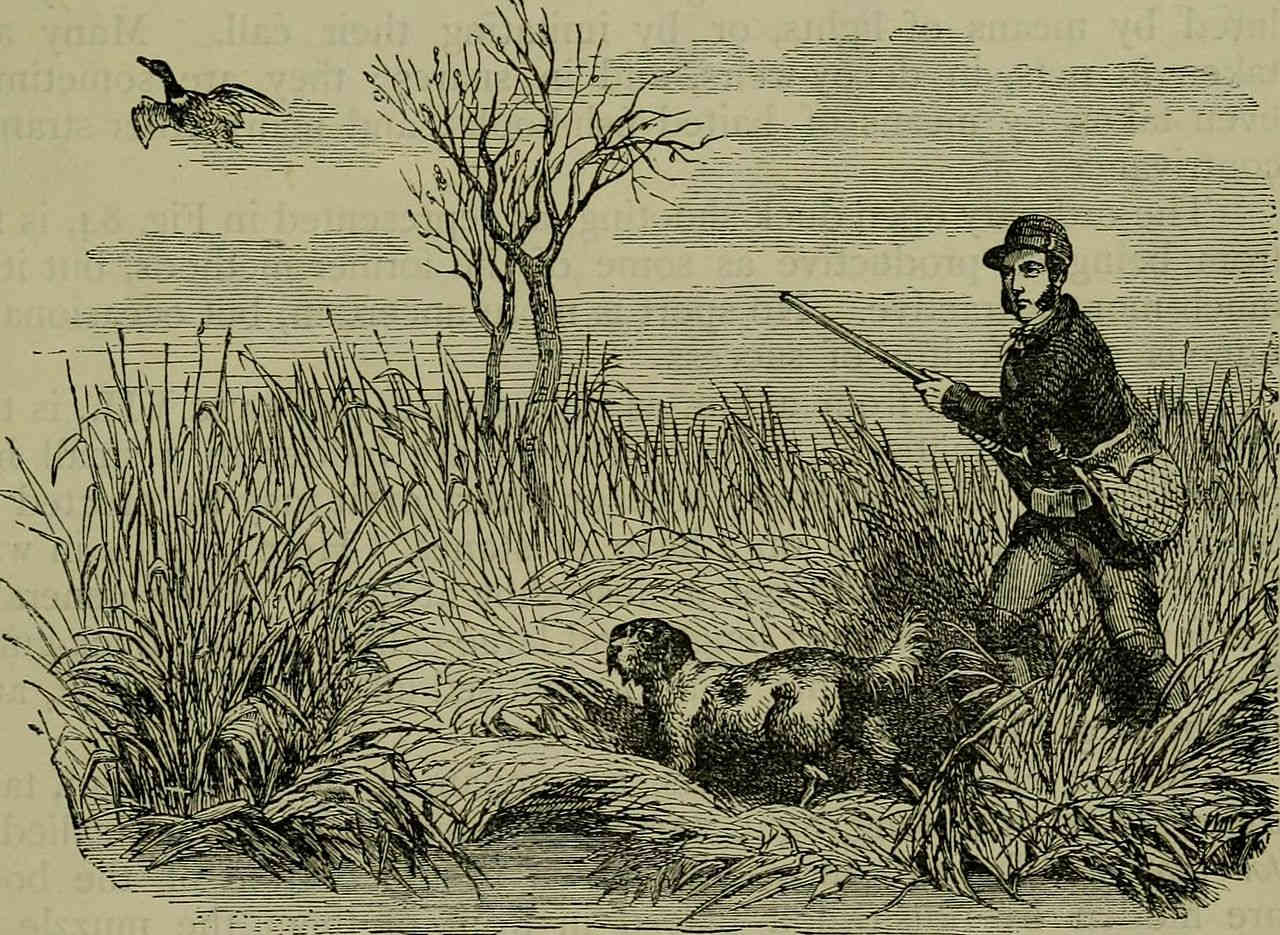A sweet young thing named Bessie B.
Collects letters ‘twixt R and T.
Perhaps the very lack of range
Makes Bess’s S’s seem so strange.
— Maxey Brooke
A sweet young thing named Bessie B.
Collects letters ‘twixt R and T.
Perhaps the very lack of range
Makes Bess’s S’s seem so strange.
— Maxey Brooke
ignoration
n. the state of being ignorant
debarrass
v. to disembarrass; to disencumber from anything that embarrasses
succedaneum
n. a substitute
arride
v. to please, gratify, delight
A ludicrous story is told of a great naval function which took place during the reign of the last Napoleon and the Empress Eugénie. Several American vessels were present, and they were drawn up in line to salute the Empress’s yacht as it passed. The French sailors, of course, manned the yards of their ships, and shouted ‘Vive l’Impératrice!’ The American Admiral knew that it was impossible to teach these words to his men in the time left to him, so he ordered his crew to shout ‘Beef, lemons, and cheese!’ The imperial yacht came on, and as it passed the fleet there was a mighty roar of ‘Beef, lemons, and cheese.’ And the Empress said she had never received such an ovation before.
— Current Literature, August 1893
UPDATE: Swansea poet Nigel Jenkins wrote an English phonetic version (not a translation) of the Welsh national anthem, so that Welsh people who don’t speak Welsh can join in:
My hen laid a haddock on top of a tree,
Glad barks and centurions throw dogs in the sea,
My guru asked Elvis and brandished Dan’s flan,
Don’s muddy bog’s blocked up with sand.
Dad, Dad! Why don’t you oil Aunty Glad?
When oars appear, on beer bottle pies,
Oh butter the hens as they fly.
I’m told this sounds convincing when sung with a Welsh accent in a crowd. Maybe they should just adopt these lyrics outright!
(Thanks, John.)
11/11/2018 In Sweden there’s a story that drought-stricken Scanian peasants assailed Queen Desideria with cries of Vi vill ha regn! (“We want rain!”) — the French-born queen was perplexed to hear “Vive la Reine!” (Thanks, Martin.)
Early American radio producers discovered that they could create a convincing crowd sound by having a group of actors repeat the word walla over and over. This technique is still sometimes used in film and TV productions — besides walla, actors sometimes mutter “peas and carrots,” “watermelon cantaloupe,” “natter natter,” or “grommish grommish.” In Europe the word rhubarb is often used.
British comedian Eric Sykes’ 1980 television special Rhubarb Rhubarb plays with this idea by removing all other dialogue: Sykes relies almost entirely on sight gags, and the scant spoken dialogue consists of people saying the word rhubarb. The 1980 program was a remake of Sykes’ 1969 film Rhubarb, which presses this conceit even further: Everyone says “rhubarb,” all the characters are named Rhubarb, car license plates read RHU BAR B, and a baby speaks by holding up a sign that says RHUBARB. “A visual gag,” said Sykes, “is worth three pages of dialogue.”
Guido Nazzo, an Italian tenor of the 1930s, sang only once in New York and received but one review: ‘Guido Nazzo: nazzo guido.’
— Willard R. Espy, Another Almanac of Words at Play, 1981

In 2017 research scientist Janelle Shane tried to train a neural network to name kittens:
Jeckle
Elbent
Jenderina
Roober
Snorp
Snox Boops
Cylon
Sookabear
Jexley Pickle
Toby Booch
Snowpie
Big Wiggy Bool
Mr Whinkles
Licky Cat
Mr Bincheh
Maxy Fay
Mr Gruffles
Liony Oli
Lingo
Conkie
Lasley Goo
Marvish
Mag Jeggles
Corko
Maggin
Mcguntton
Mara Tatters
Mush Jam
Tilly-Mapper
Mr. Jubble
Mumcake
Muppin
Bonus: At one point she accidentally trained the network on a dataset of character names from Tolkien, George R.R. Martin, and other fantasy authors and got Jarlag, Mankith, Andend of Karlans, and Mr. Yetheract. See the full list.

Now if mouse in the plural should be, and is, mice,
Then house in the plural, of course, should be hice,
And grouse should be grice and spouse should be spice
And by the same token should blouse become blice.
And consider the goose with its plural of geese;
Then a double caboose should be called a cabeese,
And noose should be neese and moose should be meese
And if mama’s papoose should be twins, it’s papeese.
Then if one thing is that, while some more is called those,
Then more than one hat, I assume, would be hose,
And gnat would be gnose and pat would be pose
And likewise the plural of rat would be rose.
— Author unknown
This test was administered to recruits at Fort Devens, Mass., during World War I. The idea is to measure reading comprehension, but the questions take on a surreal poetry:

Norms:
Below 6: Illiterate
6 to 20: Primary
21 to 25: Grammar
26 to 30: Junior high school
31 to 35: Senior high school
36 to 42: College
Three additional versions of the test are given here.

The French word for fanlight, vasistas, derives from the German phrase Was ist das? (“Who’s there?” or literally “What is that?”).
There seem to be two competing explanations: Either German visitors to France were unfamiliar with these windows and commonly asked about them — or French visitors to Germany often heard that phrase called through the window before the door opened.
(Thanks, Tony.)

“Animals seen as sport become to the mind meat, and cease to be individual creatures, so that you may feed fishes, but catch fish, ride elephants, but hunt elephant, fatten turkeys and pigs, but chase turkey and pig, throw bread to ducks, but shoot duck; and some creatures, whom God would seem to have created merely for the chase, such as grouse and snipe, require no plural forms at all. And even as few as two pigs become pig if hunted.” — Rose Macaulay
In Thomas Tryon’s Country-Man’s Companion (1684), the birds upbraid man, “O thou Two-Leg’d unfeather’d unthinking Thing,” for his slaughter:
How many thousands of our innocent kind have been murthered by Guns, Traps, Snares, &c? and many thousands both of our Males and Females have lost their loving Mates by the like Stratagems, and no Pity or Compassion taken by Man on our miserable Sufferings, but rather they encourage each other to our destruction, and cry, Hang these scurvey Birds, shoot them, destroy them, they are good for nothing but to eat up our Corn: As if God that created us had done it in vain, as if he intended us not a subsistance and Food? What right I pray, has Man to all the Corn in the world? or why should he grumble and repine if we take a few Grains to supply our Necessities, whilst he squanders away such Heaps upon his Lusts? Wherein I fear he has so much besotted himself, and by continual Practice is become so harden’d, and has so powerfully irritated the dark Wrath in himself, that all our Remonstrances to him to move him to Mercy and Compassion, and to forbear polluting himself with the Blood of the Innocent, will be but in vain, and that we must still sigh and groan under his Cruelty and Tyranny, which as long-run will return seven fold upon his own guilty Head.